Impacts on Urban VOCs and PM2.5 during a Wildfire Episode
Abstract
:1. Introduction
2. Materials and Methodology
2.1. VOC Assessment
2.1.1. TD-GC/MS Analysis
2.1.2. VOC Data Analysis and Processing
2.2. PM Assessment
2.2.1. PM2.5 Continuous Measurement during the Fire Season
2.2.2. Passive PM Sampling and SEM/EDS Particle Analysis
3. Results and Discussion
3.1. VOCs Detected during the Wildfire Period
3.2. Comparing PM2.5 Values during the Wildfire and Non-Fire Periods
3.3. PM Morphology and Elemental Profiles
3.4. Black Carbon Enrichment during the Wildfire Episode
4. Conclusions
Author Contributions
Funding
Data Availability Statement
Acknowledgments
Conflicts of Interest
References
- Marlon, J.R.; Bartlein, P.J.; Walsh, M.K.; Harrison, S.P.; Brown, K.J.; Edwards, M.E.; Higuera, P.E.; Power, M.J.; Anderson, R.S.; Briles, C.; et al. Wildfire responses to abrupt climate change in North America. Proc. Natl. Acad. Sci. USA 2009, 106, 2519–2524. [Google Scholar] [CrossRef] [PubMed]
- US-EPA. Climate Impacts on Ecosystems. 2021. Available online: https://19january2017snapshot.epa.gov/climate-impacts/climate-impacts-ecosystems_.html (accessed on 30 August 2021).
- Abatzoglou, J.T.; Williams, A.P. Impact of anthropogenic climate change on wildfire across western US forests. Proc. Natl. Acad. Sci. USA 2016, 113, 11770–11775. [Google Scholar] [CrossRef] [PubMed]
- CalFire. Camp Fire Incident Update. 2018 10/24/2022. 2024. Available online: https://www.fire.ca.gov/incidents/2018/11/8/camp-fire/ (accessed on 16 March 2024).
- Wikipedia. 2018 California Wildfires. 2023. Available online: https://en.wikipedia.org/wiki/2018_California_wildfires#:~:text=It%20was%20also%20the%20largest,100%20million%20acres%20of%20land (accessed on 14 August 2023).
- Black, C.; Tesfaigzi, Y.; Bassein, J.A.; Miller, L.A. Wildfire smoke exposure and human health: Significant gaps in research for a growing public health issue. Environ. Toxicol. Pharmacol. 2017, 55, 186–195. [Google Scholar] [CrossRef] [PubMed]
- Jin, L.; Permar, W.; Selimovic, V.; Ketcherside, D.; Yokelson, R.J.; Hornbrook, R.S.; Apel, E.C.; Ku, I.-T.; Collett, J.L., Jr.; Sullivan, A.P.; et al. Constraining emissions of volatile organic compounds from western US wildfires with WE-CAN and FIREX-AQ airborne observations. Atmos. Meas. Technol. 2023, 23, 5969–5991. [Google Scholar] [CrossRef]
- US-EPA. Climate Change Indicators: Wildfires. April 2021. Available online: https://www.epa.gov/climate-indicators/climate-change-indicators-wildfires (accessed on 30 August 2021).
- US-EPA. Health Effects Attributed to Wildfire Smoke. 2022. Available online: https://www.epa.gov/wildfire-smoke-course/health-effects-attributed-wildfire-smoke (accessed on 19 May 2022).
- WHO. Climate Change and Health. 2021. Available online: https://www.who.int/news-room/fact-sheets/detail/climate-change-and-health (accessed on 30 August 2021).
- Reid, C.E.; Brauer, M.; Johnston, F.H.; Jerrett, M.; Balmes, J.R.; Elliott, C.T. Critical Review of Health Impacts of Wildfire Smoke Exposure. Environ. Health Perspect. 2016, 124, 1334–1343. [Google Scholar] [CrossRef]
- US-EPA. Wildland Fire Research to Protect Health and the Environment. 2021. Available online: https://www.epa.gov/air-research/wildland-fire-research-protect-health-and-environment (accessed on 30 August 2021).
- US-CDC. Climate Effects on Health: Wildfires. 2021. Available online: https://www.cdc.gov/climateandhealth/effects/wildfires.htm (accessed on 30 August 2021).
- US-EPA. Wildland Fire Research: Health Effects Research. Available online: https://www.epa.gov/air-research/wildland-fire-research-health-effects-research#:~:text=The%20effects%20of%20smoke%20from,especially%20vulnerable%20to%20smoke%20exposure (accessed on 10 February 2022).
- Holm, S.M.; Miller, M.D.; Balmes, J.R. Health effects of wildfire smoke in children and public health tools: A narrative review. J. Expo. Sci. Environ. Epidemiol. 2021, 31, 1–20. [Google Scholar] [CrossRef]
- Ghetu, C.C.; Rohlman, D.; Smith, B.W.; Scott, R.P.; Adams, K.A.; Hoffman, P.D.; Anderson, K.A. Wildfire Impact on Indoor and Outdoor PAH Air Quality. Environ. Sci. Technol. 2022, 56, 10042–10052. [Google Scholar] [CrossRef]
- Fent, K.W.; Toennis, C.; Sammons, D.; Robertson, S.; Bertke, S.; Calafat, A.M.; Pleil, J.D.; Wallace, M.A.G.; Kerber, S.; Smith, D.; et al. Firefighters’ absorption of PAHs and VOCs during controlled residential fires by job assignment and fire attack tactic. J. Expo. Sci. Environ. Epidemiol. 2020, 30, 338–349. [Google Scholar] [CrossRef]
- Aguilera, R.; Corringham, T.; Gershunov, A.; Benmarhnia, T. Wildfire smoke impacts respiratory health more than fine particles from other sources: Observational evidence from Southern California. Nat. Commun. 2021, 12, 1493. [Google Scholar] [CrossRef]
- Yu, Y.; Zou, W.W.; Jerrett, M.; Meng, Y.Y. Acute Health Impact of Convectional and Wildfire-related PM2.5: A narrative review. Environ. Adv. 2022, 12, 100179. [Google Scholar] [CrossRef]
- Valavanidis, A.; Fiotakis, K.; Vlachogianni, T. Airborne particulate matter and human health: Toxicological assessment and importance of size and composition of particles for oxidative damage and carcinogenic mechanisms. J. Environ. Sci. Health Part C 2008, 26, 339–362. [Google Scholar] [CrossRef]
- Reponen, T.; Grinshpun, S.A.; Trakumas, S.; Martuzevicius, D.; Wang, Z.-M.; LeMasters, G.; Lockey, J.E.; Biswas, P. Concentration gradient patterns of aerosol particles near interstate highways in the Greater Cincinnati airshed. J. Environ. Monit. 2003, 5, 557–562. [Google Scholar] [CrossRef]
- Cohen, A.J.; Anderson, H.R.; Ostro, B.; Pandey, K.D.; Krzyzanowski, M.; Künzli, N.; Gutschmidt, K.; Pope, A.; Romieu, I.; Samet, J.M.; et al. The global burden of disease due to outdoor air pollution. J. Toxicol. Environ. Health Part A 2005, 68, 1301–1307. [Google Scholar] [CrossRef]
- Lee, J.E.; Gorkowski, K.; Meyer, A.G.; Benedict, K.B.; Aiken, A.C.; Dubey, M.K. Wildfire Smoke Demonstrates Significant and Predictable Black Carbon Light Absorption Enhancements. Geophys. Res. Lett. 2022, 49, e2022GL099334. [Google Scholar] [CrossRef]
- Ditas, J.; Ma, N.; Zhang, Y.; Assmann, D.; Neumaier, M.; Riede, H.; Karu, E.; Williams, J.; Scharffe, D.; Wang, Q.; et al. Strong impact of wildfires on the abundance and aging of black carbon in the lowermost stratosphere. Proc. Natl. Acad. Sci. USA 2018, 115, E11595–E11603. [Google Scholar] [CrossRef] [PubMed]
- Tollefson, J. Soot a major contributor to climate change. Nature 2013, 15, 10–38. [Google Scholar] [CrossRef]
- Caubel, J.J.; Cados, T.E.; Preble, C.V.; Kirchstetter, T.W. A Distributed Network of 100 Black Carbon Sensors for 100 Days of Air Quality Monitoring in West Oakland, California. Environ. Sci. Technol. 2019, 53, 7564–7573. [Google Scholar] [CrossRef] [PubMed]
- Sparks, T.L.; Wagner, J. Composition of particulate matter during a wildfire smoke episode in an urban area. Aerosol Sci. Technol. 2021, 55, 734–747. [Google Scholar] [CrossRef]
- Gaspar, F.W.; Maddalena, R.; Williams, J.; Castorina, R.; Wang, Z.-M.; Kumagai, K.; McKone, T.E.; Bradman, A. Ultrafine, fine, and black carbon particle concentrations in California child-care facilities. Indoor Air 2017, 28, 102–111. [Google Scholar] [CrossRef] [PubMed]
- Turner, M.C.; Andersen, Z.J.; Baccarelli, A.; Diver, W.R.; Gapstur, S.M.; Pope, C.A.; Prada, D.; Samet, J.; Thurston, G.; Cohen, A.; et al. Outdoor air pollution and cancer: An overview of the current evidence and public health recommendations. CA A Cancer J. Clin. 2020, 70, 460–479. [Google Scholar] [CrossRef] [PubMed]
- Korsiak, J.; Pinault, L.; Christidis, T.; Burnett, R.T.; Abrahamowicz, M.; Weichenthal, S. Long-term exposure to wildfires and cancer incidence in Canada: A population-based observational cohort study. Lancet Planet. Health 2022, 6, e400–e409. [Google Scholar] [CrossRef]
- Dickinson, G.N.; Miller, D.D.; Bajracharya, A.; Bruchard, W.; Durbin, T.A.; McGarry, J.K.P.; Moser, E.P.; Nuñez, L.A.; Pukkila, E.J.; Scott, P.S.; et al. Health Risk Implications of Volatile Organic Compounds in Wildfire Smoke During the 2019 FIREX-AQ Campaign and Beyond. GeoHealth 2022, 6, e2021GH000546. [Google Scholar] [CrossRef]
- Liang, Y.; Weber, R.J.; Misztal, P.K.; Jen, C.N.; Goldstein, A.H. Aging of Volatile Organic Compounds in October 2017 Northern California Wildfire Plumes. Environ. Sci. Technol. 2022, 56, 1557–1567. [Google Scholar] [CrossRef]
- US-EPA. Technical Overview of Volatile Organic Compounds; United States Environmental Protection Agency: Washington, DC, USA, 2017; p. 12.
- Li, A.J.; Pal, V.K.; Kannan, K. A review of environmental occurrence, toxicity, biotransformation and biomonitoring of volatile organic compounds. Environ. Chem. Ecotoxicol. 2021, 3, 91–116. [Google Scholar] [CrossRef]
- Da Silva, F.C., Jr.; Felipe, M.B.M.C.; de Castro, D.E.F.; Araújo, S.C.D.S.; Sisenando, H.C.N.; de Medeiros, S.R.B. A look beyond the priority: A systematic review of the genotoxic, mutagenic, and carcinogenic endpoints of non-priority PAHs. Environ. Pollut. 2021, 278, 116838. [Google Scholar] [CrossRef]
- Wang, Z.-M.; Wagner, J.; Wall, S. Characterization of Laser Printer Nanoparticle and VOC Emissions, Formation Mechanisms, and Strategies to Reduce Airborne Exposures. Aerosol Sci. Technol. 2011, 45, 1060–1068. [Google Scholar] [CrossRef]
- Wang, Z.-M.; Biswas, P. Nickel Speciation and Aerosol Formation During Combustion of Kerosene Doped with Nickel Nitrate Aerosol in a Premixed Burner. Aerosol Sci. Technol. 2000, 33, 525–535. [Google Scholar] [CrossRef]
- Rooney, B.; Wang, Y.; Jiang, J.H.; Zhao, B.; Zeng, Z.-C.; Seinfeld, J.H. Air quality impact of the Northern California Camp Fire of November 2018. Atmos. Meas. Technol. 2020, 20, 14597–14616. [Google Scholar] [CrossRef]
- CalFire. California_Fire_Perimeters_1878–2019. California Department of Forestry and Fire Protection Fire and Resource Assessment Program 2024. Available online: https://services.arcgis.com/jIL9msH9OI208GCb/arcgis/rest/services/California_Fire_Perimeters_1878_2019/FeatureServer (accessed on 19 January 2024).
- NASA. Wordview Service Home Page. Available online: https://worldview.earthdata.nasa.gov/ (accessed on 13 March 2024).
- Woolfenden, E.A.; McClenny, W.A. Compendium Method TO-17. Determination of Volatile Organic Compounds in Ambient Air Using Active Sampling onto Sorbent Tubes; US EPA: Cincinnati, OH, USA, 1999.
- US-EPA. Method 8260B, Volatile Organic Compounds by Gas Chromatography/Mass Spectrometry (GC/MS). 1996. Available online: https://19january2017snapshot.epa.gov/sites/production/files/2015-12/documents/8260b.pdf (accessed on 16 March 2024).
- Wang, Z.-M.; Zhou, Y.; Gaspar, F.W.; Bradman, A. Using low cost open-face passive samplers to sample PM concentration and elemental composition in childcare facilities. Environ. Sci. Process Impacts 2020, 22, 1502–1513. [Google Scholar] [CrossRef] [PubMed]
- WHO. Indoor air quality: Organic pollutants. Environ. Technol. Lett. 1989, 10, 855–858. [Google Scholar] [CrossRef]
- Simms, L.A.; Borras, E.; Chew, B.S.; Matsui, B.; McCartney, M.M.; Robinson, S.K.; Kenyon, N.; Davis, C.E. Environmental sampling of volatile organic compounds during the 2018 Camp Fire in Northern California. J. Environ. Sci. 2020, 103, 135–147. [Google Scholar] [CrossRef]
- Ivančič, M.; Rigler, M.; Alföldy, B.; Lavrič, G.; Brecelj, I.J.; Gregorič, A. Highly Time-Resolved Apportionment of Carbonaceous Aerosols from Wildfire Using the TC–BC Method: Camp Fire 2018 Case Study. Toxics 2023, 11, 497. [Google Scholar] [CrossRef]
- Majdi, M.; Sartelet, K.; Lanzafame, G.M.; Couvidat, F.; Kim, Y.; Chrit, M.; Turquety, S. Precursors and formation of secondary organic aerosols from wildfires in the Euro-Mediterranean region. Atmos. Meas. Technol. 2019, 19, 5543–5569. [Google Scholar] [CrossRef]
- OEHHA. All OEHHA Acute, 8-Hour and Chronic Reference Exposure Levels (RELs) as of Augus; California Office of Environmental Health Hazard Assessment, Ed.; 2020. Available online: https://oehha.ca.gov/air/general-info/oehha-acute-8-hour-and-chronic-reference-exposure-level-rel-summary (accessed on 3 August 2023).
- New-Jersey-Department-of-Health. Methacrylonitrile. Hazardous Substance Fact Sheet 2000. Available online: https://nj.gov/health/eoh/rtkweb/documents/fs/1220.pdf (accessed on 2 August 2022).
- Agency-for-Toxic-Substances-and-Disease-Registry. Medical Management Guidelines for Toluene. 2014. Available online: https://www.atsdr.cdc.gov/MHMI/mmg56.pdf (accessed on 3 August 2022).
- Sekimoto, K.; Coggon, M.M.; Gkatzelis, G.I.; Stockwell, C.E.; Peischl, J.; Soja, A.J.; Warneke, C. Fuel-Type Independent Parameterization of Volatile Organic Compound Emissions from Western US Wildfires. Environ. Sci. Technol. 2023, 57, 13193–13204. [Google Scholar] [CrossRef]
- Chow, F.K.; Yu, K.A.; Young, A.; James, E.; Grell, G.A.; Csiszar, I.; Tsidulko, M.; Freitas, S.; Pereira, G.; Giglio, L.; et al. High-Resolution Smoke Forecasting for the 2018 Camp Fire in California. Bull. Am. Meteorol. Soc. 2022, 103, E1531–E1552. [Google Scholar] [CrossRef]
- Brewer, M.J.; Clements, C.B. The 2018 Camp Fire: Meteorological Analysis Using In Situ Observations and Numerical Simulations. Atmosphere 2019, 11, 47. [Google Scholar] [CrossRef]
- Kaiser, E.R. The Sulfur Balance of Incinerators. J. Air Pollut. Control. Assoc. 1968, 18, 171–174. [Google Scholar] [CrossRef]
- Tóth, A.; Hoffer, A.; Nyirő-Kósa, I.; Pósfai, M.; Gelencsér, A. Atmospheric tar balls: Aged primary droplets from biomass burning? Atmos. Chem. Phys. 2014, 14, 6669–6675. [Google Scholar] [CrossRef]
- Hussein, T.; Li, X.; Bakri, Z.; Alastuey, A.; Arar, S.; Al-Hunaiti, A.; Viana, M.; Petäjä, T. Organic and Elemental Carbon in the Urban Background in an Eastern Mediterranean City. Atmosphere 2022, 13, 197. [Google Scholar] [CrossRef]
- Bond, T.C.; Doherty, S.J.; Fahey, D.W.; Forster, P.M.; Berntsen, T.; DeAngelo, B.J.; Flanner, M.G.; Ghan, S.; Kärcher, B.; Koch, D.; et al. Bounding the role of black carbon in the climate system: A scientific assessment. J. Geophys. Res. Atmos. 2013, 118, 5380–5552. [Google Scholar] [CrossRef]
- WHO. Health Effects of Black Carbon; WHO Regional Office for Europe: Copenhagen, Denmark, 2012.
- Janssen, N.A.H.; Hoek, G.; Simic-Lawson, M.; Fischer, P.; Van Bree, L.; ten Brink, H.; Keuken, M.; Atkinson, R.W.; Anderson, H.R.; Brunekreef, B.; et al. Black Carbon as an Additional Indicator of the Adverse Health Effects of Airborne Particles Compared with PM10 and PM2.5. Environ. Health Perspect. 2011, 119, 1691–1699. [Google Scholar] [CrossRef] [PubMed]
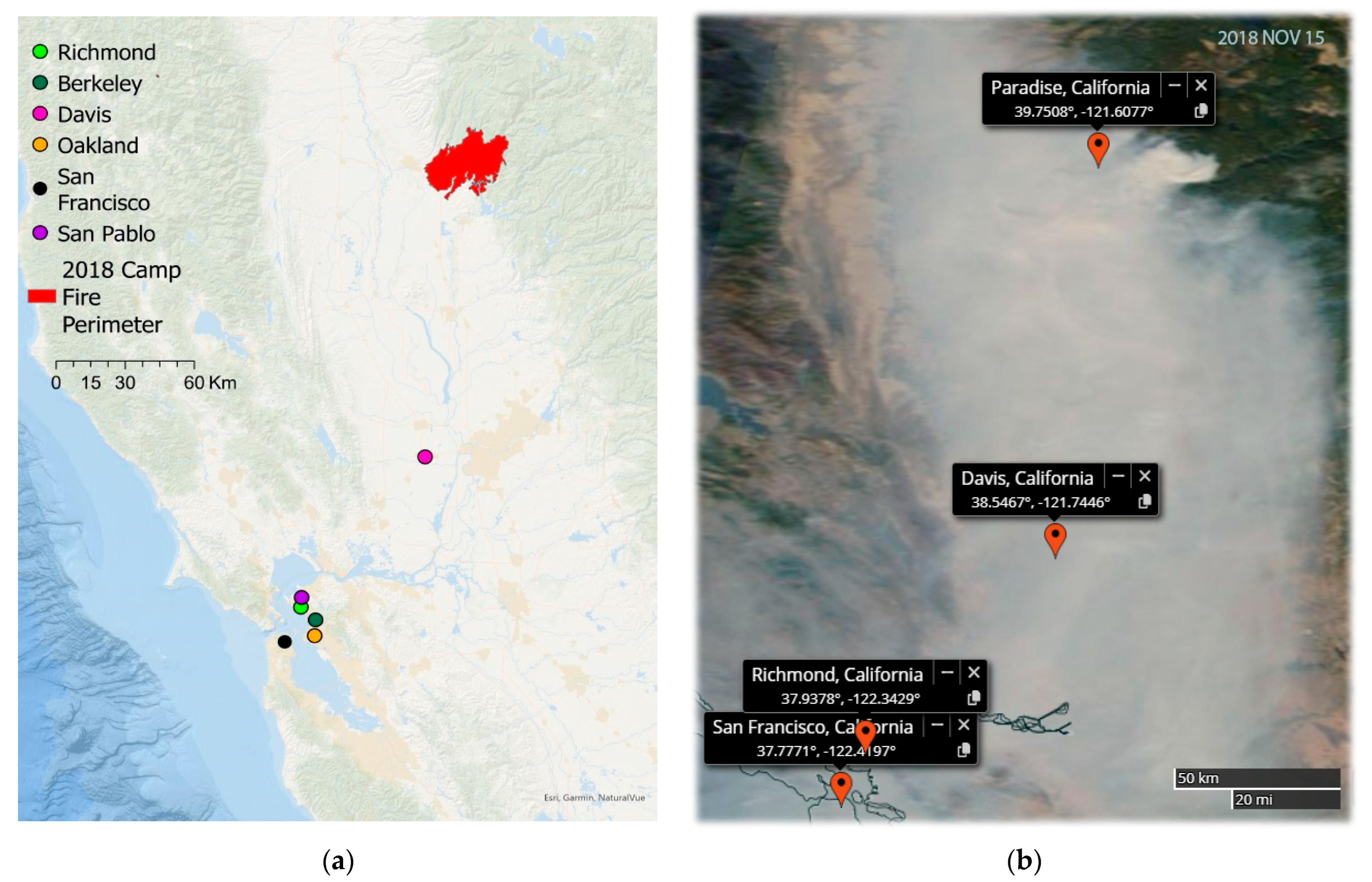
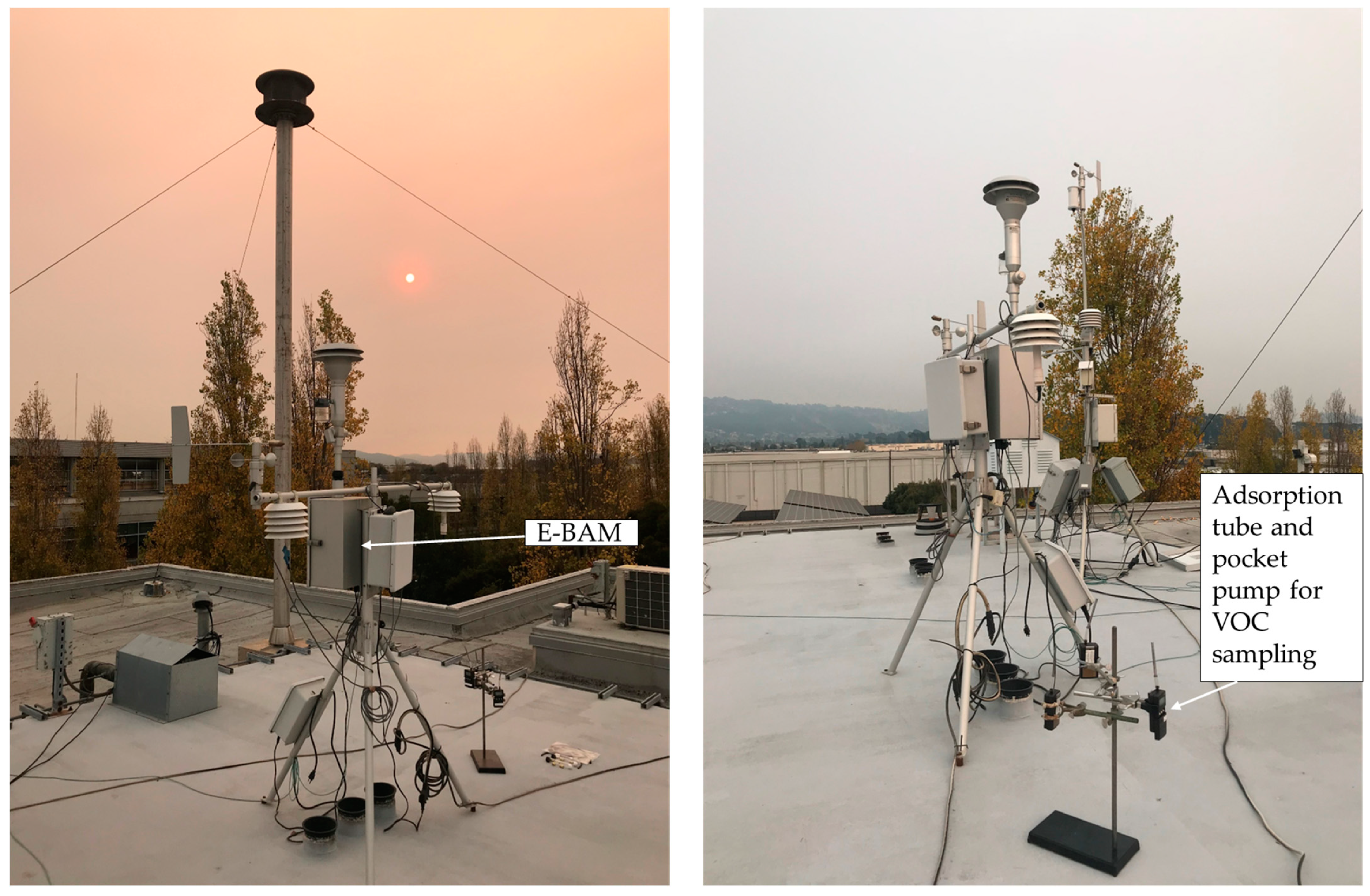
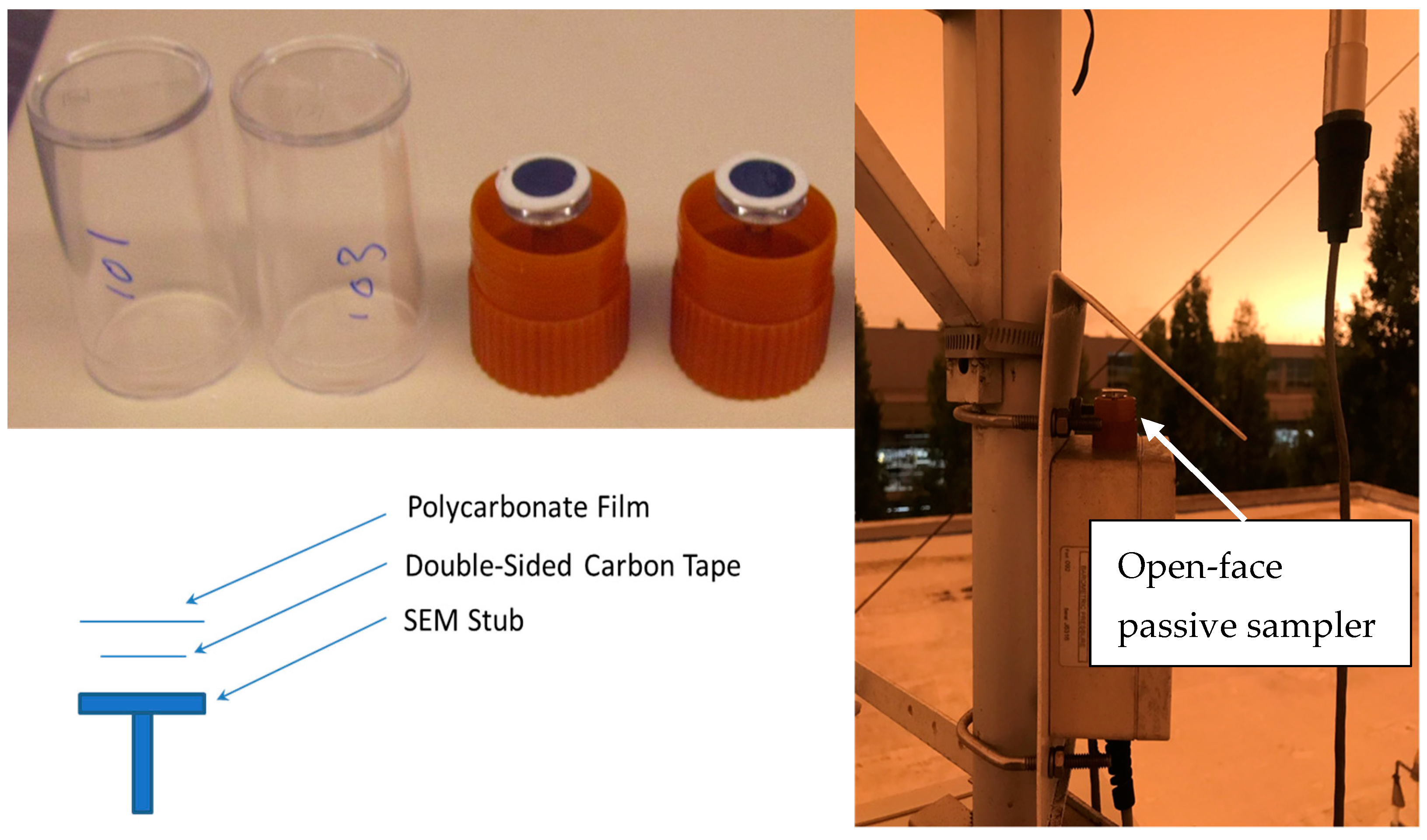

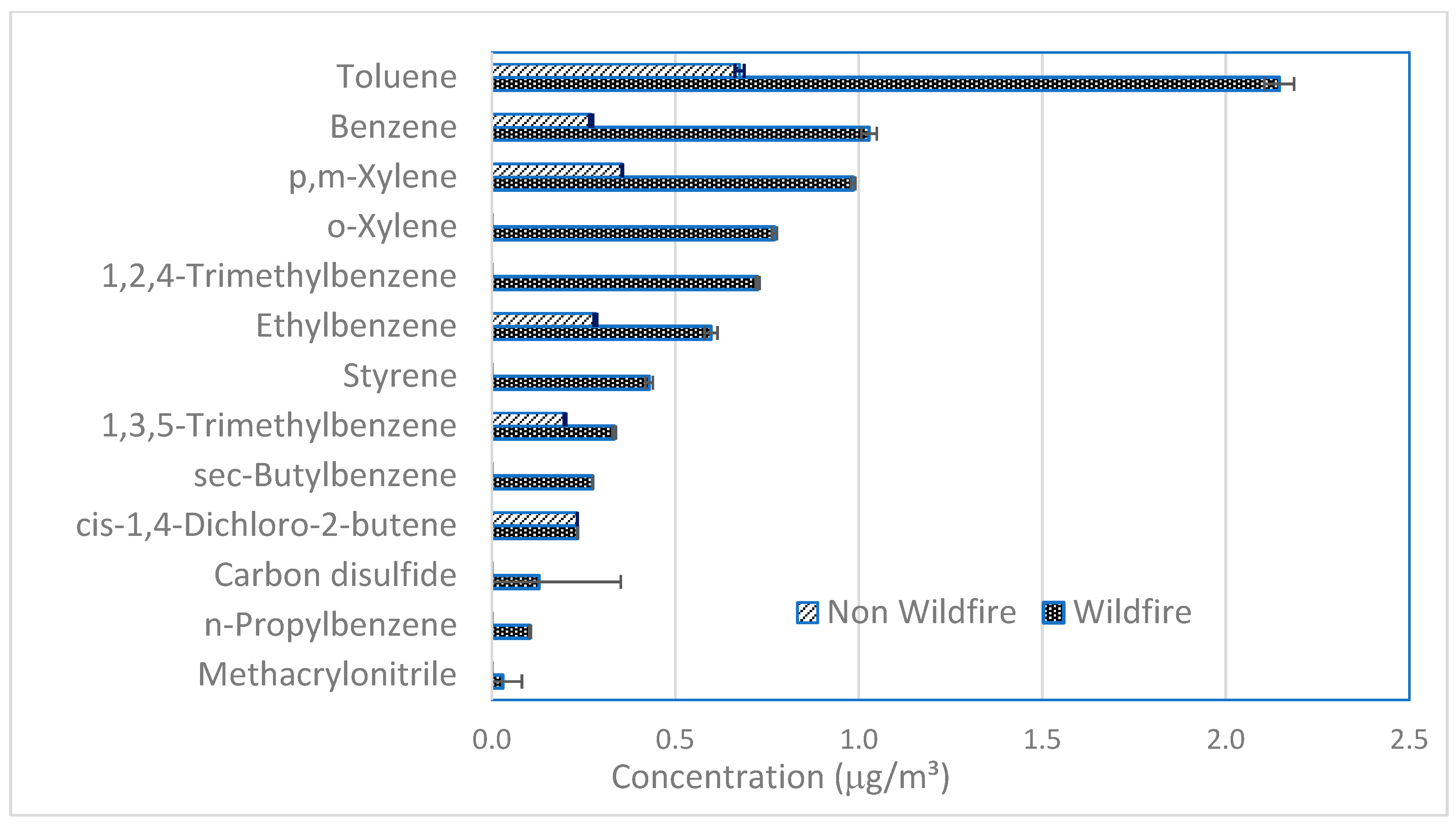
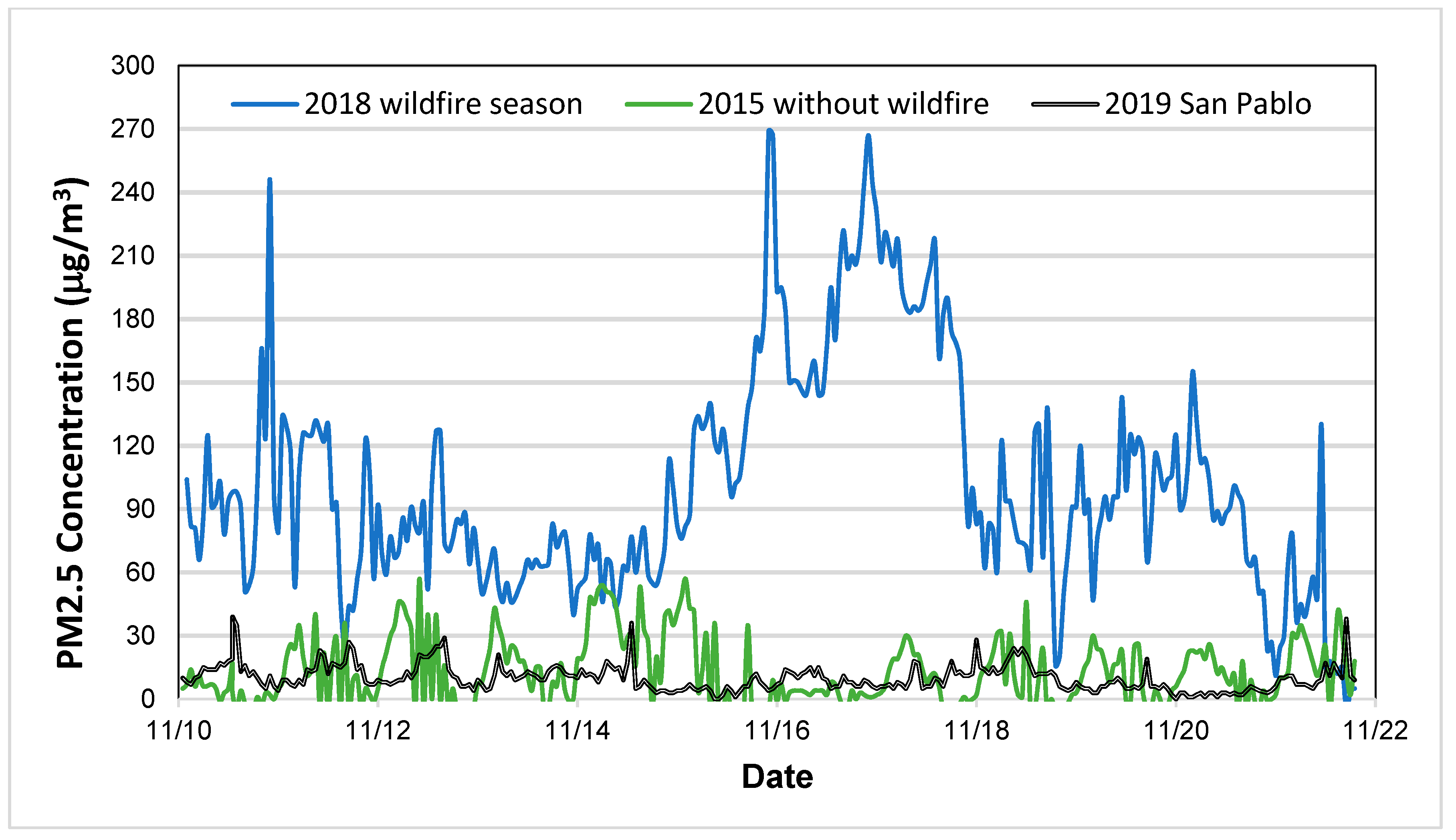
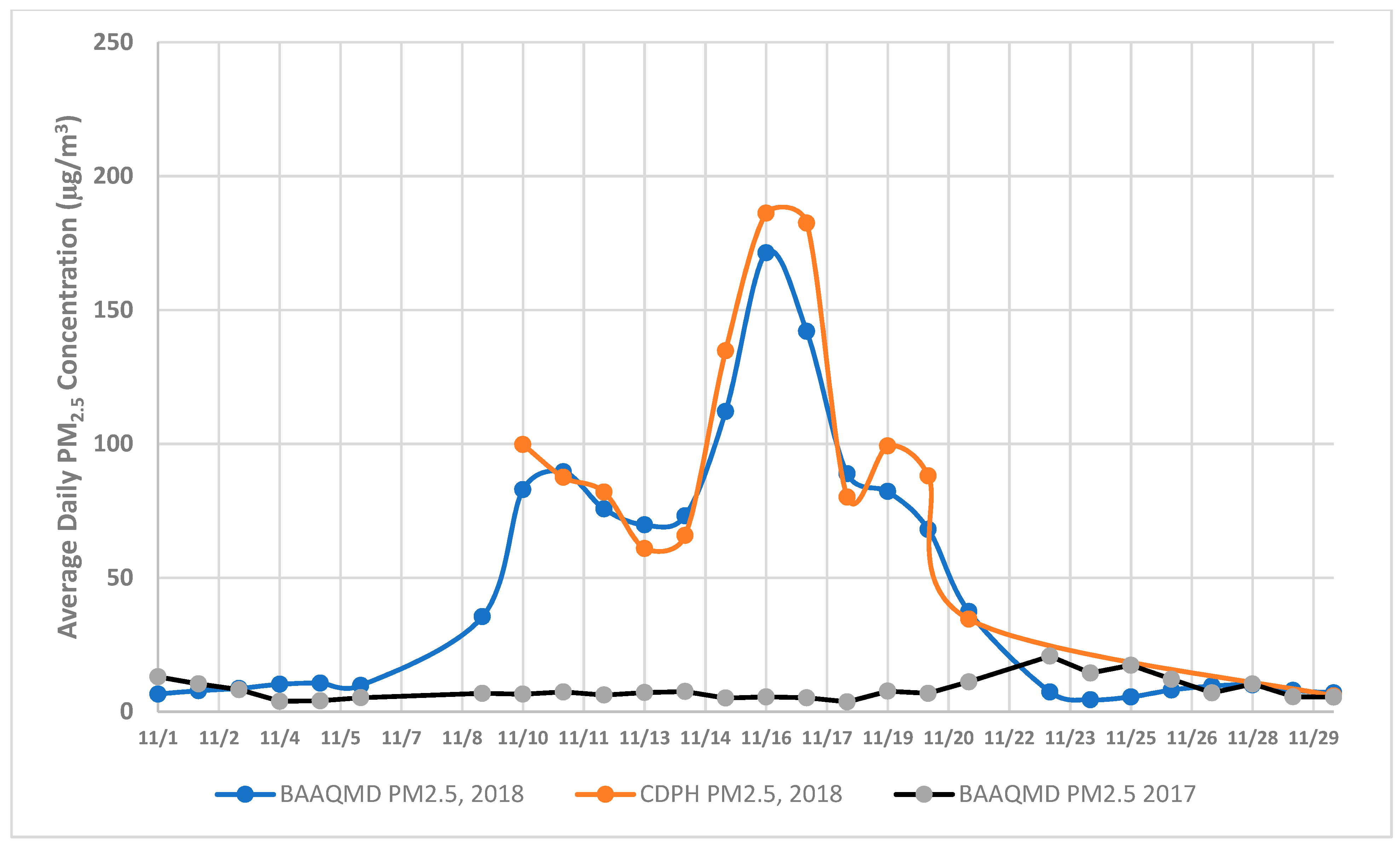
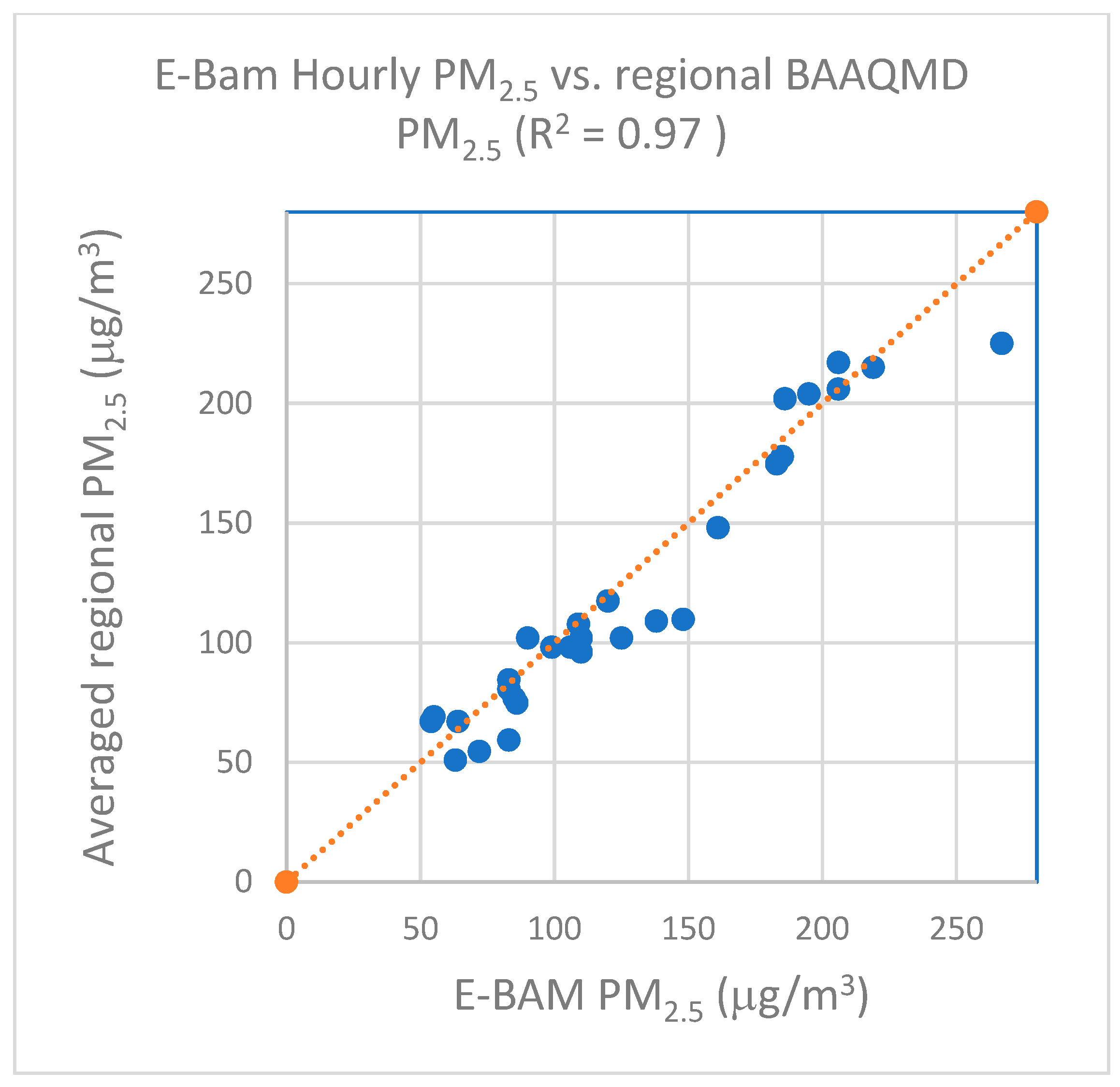

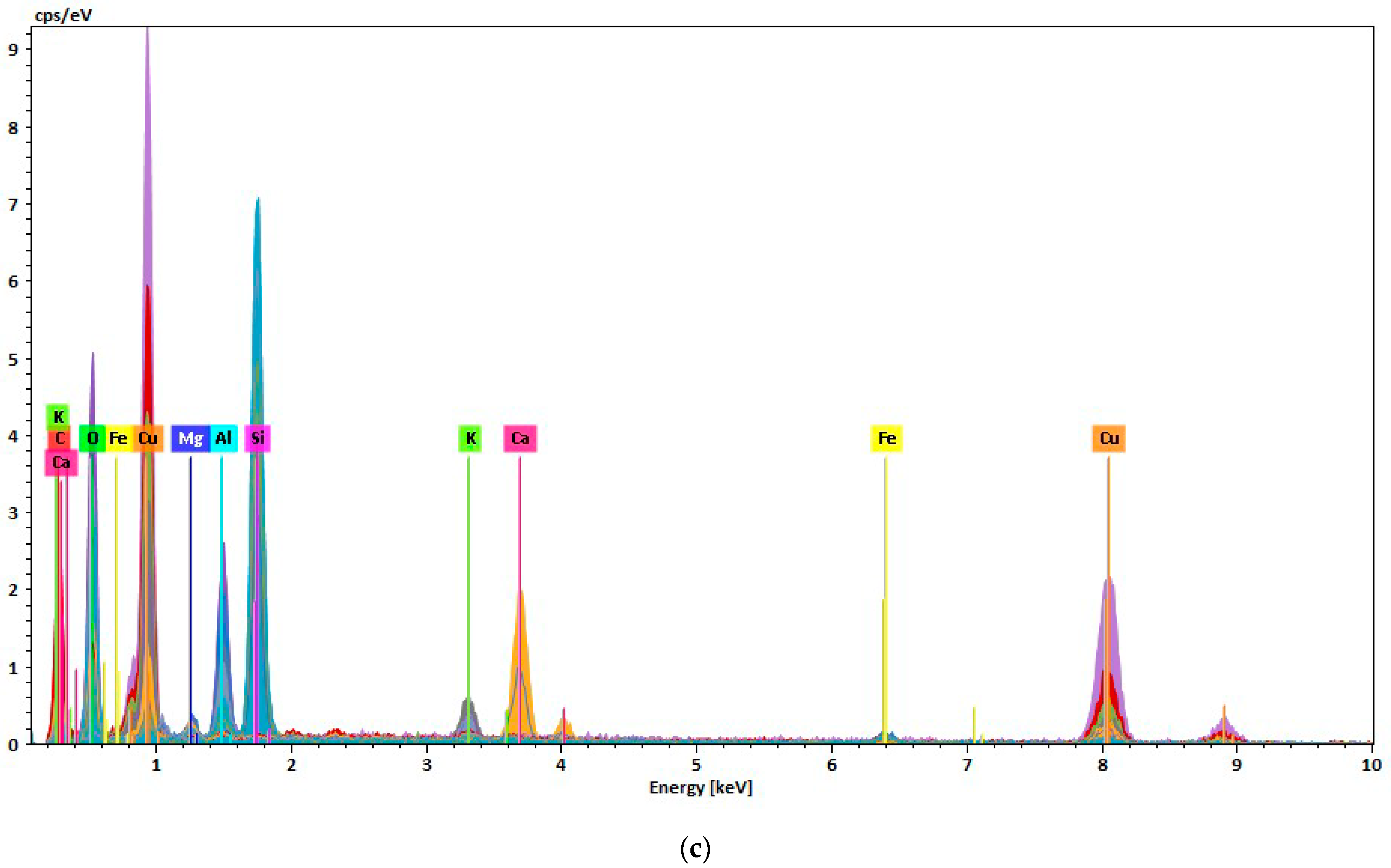

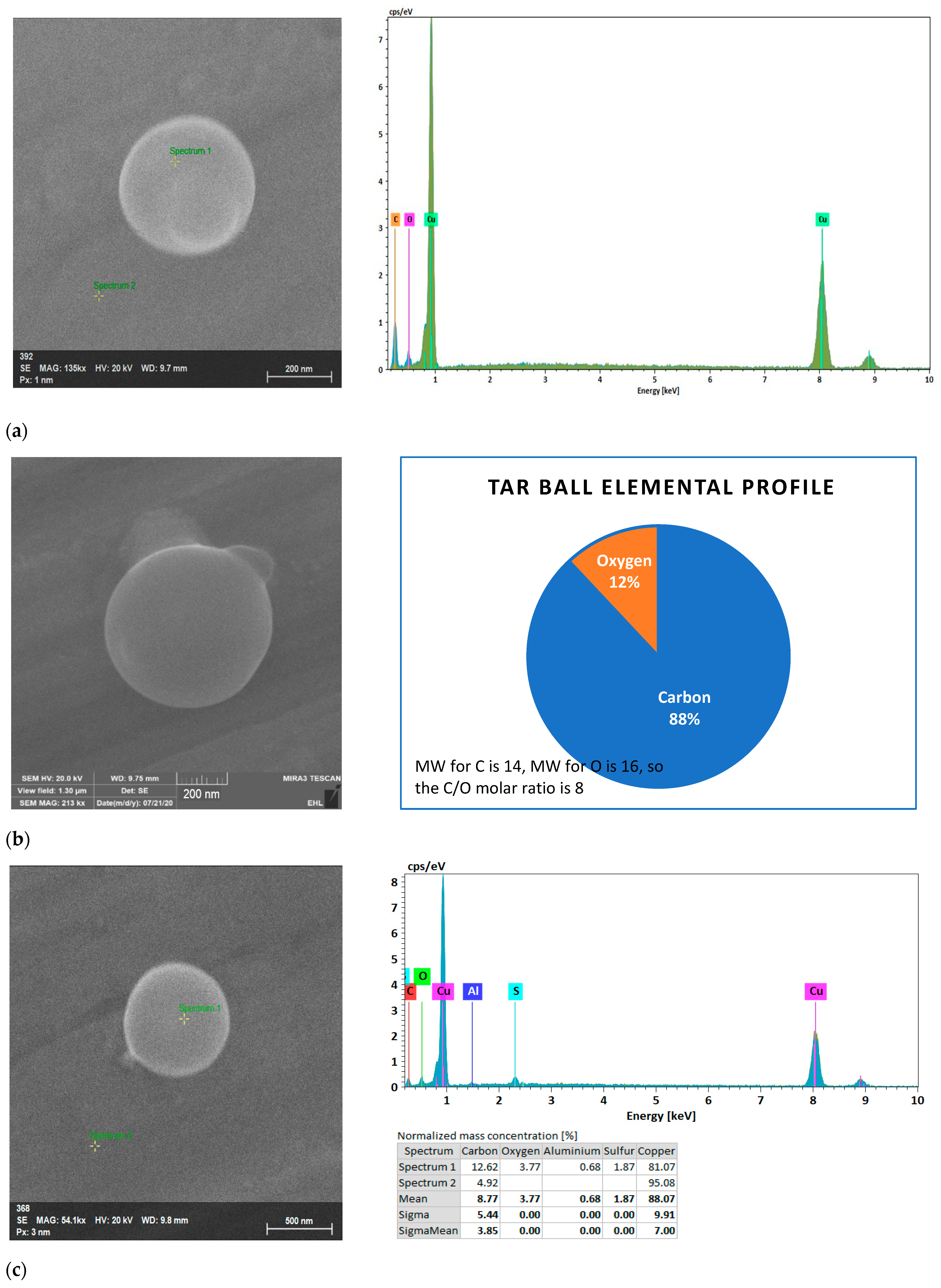


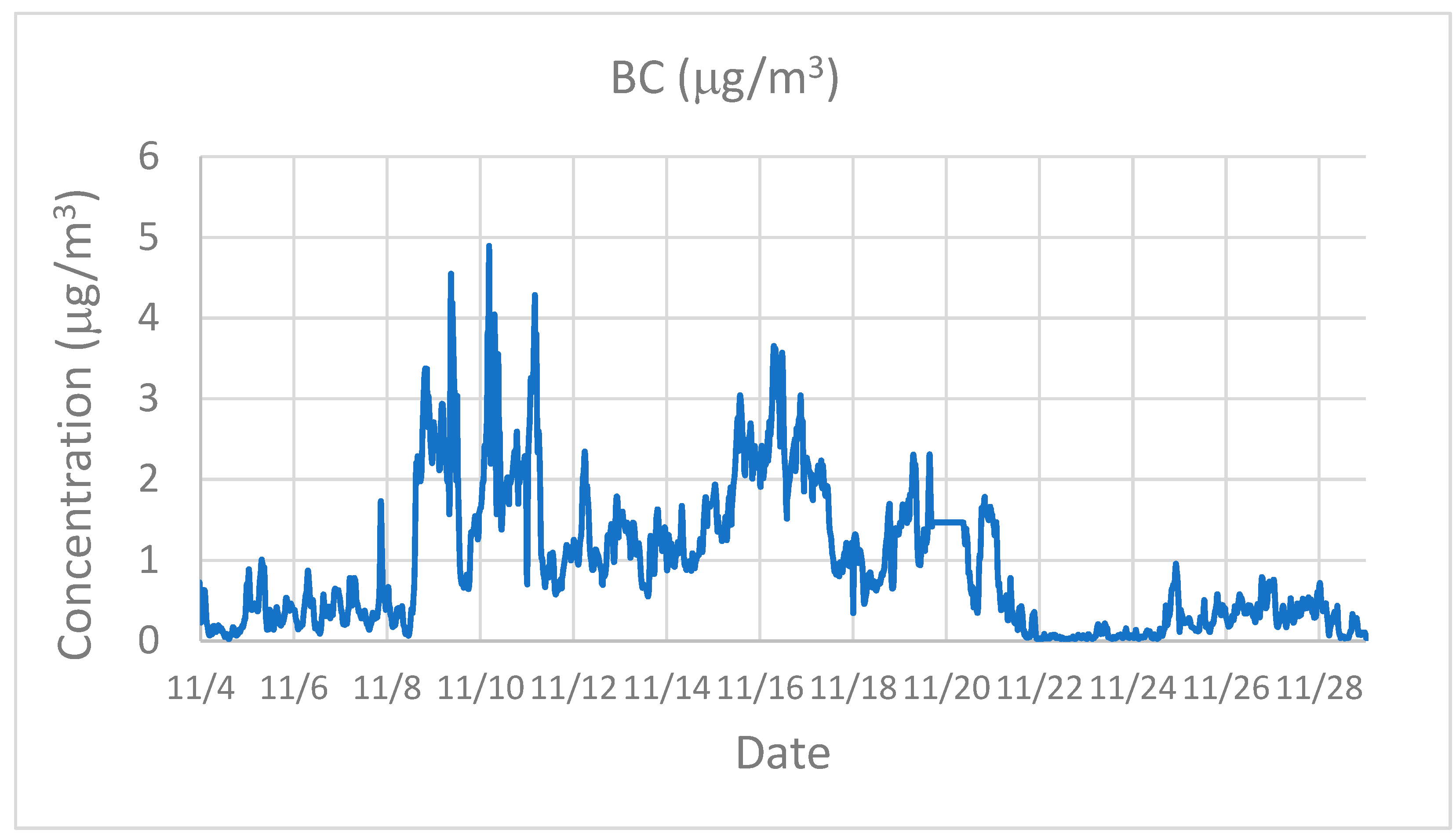
| Compound | Name | Retention Time (RT), min | MDL, μg/m3 |
|---|---|---|---|
| 1 | carbon disulfide | 3.948 | 0.39 |
| 2 | methylacrylonitrile | 5.726 | 0.08 |
| 3 | benzene | 8.113 | 0.10 |
| 4 | toluene | 11.975 | 0.12 |
| 5 | ethylbenzene | 15.017 | 0.08 |
| 6 | m-xylene | 15.28 | 0.05 |
| 7 | p-xylene | 15.28 | 0.18 |
| 8 | styrene | 15.951 | 0.07 |
| 9 | o-xylene | 15.986 | 0.11 |
| 10 | cis-1,4-dichloro-2-butene | 16.921 | 0.08 |
| 11 | benzene, propyl- | 17.698 | 0.17 |
| 12 | benzene, 1,3,5-trimethyl- | 18.097 | 0.08 |
| 13 | 1,2,4-trimethylbenzene | 18.804 | 0.08 |
| 14 | sec-butylbenzene | 19.203 | 0.05 |
Disclaimer/Publisher’s Note: The statements, opinions and data contained in all publications are solely those of the individual author(s) and contributor(s) and not of MDPI and/or the editor(s). MDPI and/or the editor(s) disclaim responsibility for any injury to people or property resulting from any ideas, methods, instructions or products referred to in the content. |
© 2024 by the authors. Licensee MDPI, Basel, Switzerland. This article is an open access article distributed under the terms and conditions of the Creative Commons Attribution (CC BY) license (https://creativecommons.org/licenses/by/4.0/).
Share and Cite
Wang, Z.-M.; Wang, P.; Wagner, J.; Kumagai, K. Impacts on Urban VOCs and PM2.5 during a Wildfire Episode. Environments 2024, 11, 63. https://doi.org/10.3390/environments11040063
Wang Z-M, Wang P, Wagner J, Kumagai K. Impacts on Urban VOCs and PM2.5 during a Wildfire Episode. Environments. 2024; 11(4):63. https://doi.org/10.3390/environments11040063
Chicago/Turabian StyleWang, Zhong-Min, Ping Wang, Jeff Wagner, and Kazukiyo Kumagai. 2024. "Impacts on Urban VOCs and PM2.5 during a Wildfire Episode" Environments 11, no. 4: 63. https://doi.org/10.3390/environments11040063








